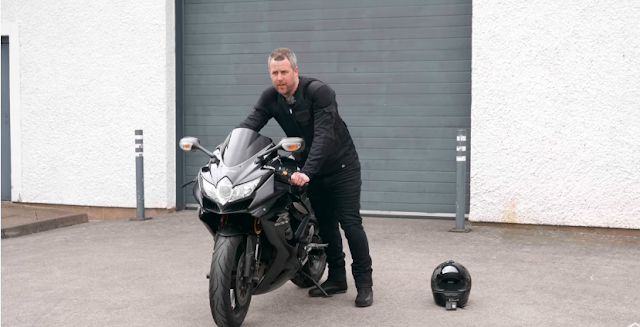Push starting (sometimes called bump-starting) is a technique used to start a vehicle's engine that involves engaging the transmission while the vehicle is pushed forward directly. For motorcyclists, push start is a useful skill when your battery dies or for an engine that won't start. Go to step 1 to learn how to revive your motorcycle!
1
Check out other things that might help the bike to start. Before you try to start your motorcycle by pushing it, it can ultimately save you time by quickly reviewing the types of problems that pushing will not solve. For example, it takes you just a second to make sure your motorcycle won't start because it's out of gas, just check the gas level, then you'll see a shortlist that you might want to check before pushing it off, if any of these situations are not you. In this case, it could be the reason why your motorcycle does not start:
There is gasoline in the tank
The radiator key is in "on" (more usual in old motorcycles)
The kickstand is raised
Transmission is in neutral.
The switch is in "run" mode.
2
Put the first or second gear. Push starting requires the bike to go at a relatively low speed. On most motorcycles, “second gear” is the easiest gear for push starts, although it is common to do this in first gear as well. Rarely, it will be easier for some motorcycles to start in first gear than in second gear.
In general, if your motorcycle is parked, it is in neutral with this you will know if it is the case to push it forward. In neutral it is the only speed in which the motorcycle advances without engaging the clutch. To shift from neutral to first on a standard bike, step on the clutch and step on the pedal. To shift from first to second, depress the clutch and release the pedal.
3
Don't let go of the clutch and start pushing. Most guides recommend driving the motorcycle at a speed of at least 8 km / h to achieve a push start. [1] This will require a very open space in front, so make sure the area is clear before you begin. You may also want to leave plenty of free space on your sides in case you lose control of the bike after starting it.
You can reach a very easy push start speed by letting the bike go downhill. In this case, instead of running next to the bike and pushing it, you would ride it. If you are trying to push off on a downhill, make sure you don't lose control of the bike.
4
Release the clutch and go. Once you're up to speed, release the clutch and press the power button in one slow motion as the bike moves forward. Speed up a bit. When the bike starts, engage the clutch to prevent the bike from slipping away.
5
Rev up the engine. When the motorcycle starts, do not let it turn off again. By stepping on the clutch, you accelerate the engine to a medium level so that your bike does not stall or stall.
When you accelerate, you make the battery charge, if the reason why your motorcycle did not start was that the battery was discharged.
6
Get moving. Once your bike is in motion, it is unlikely to shut down again, unless you pay it on purpose or the engine stalls. If your battery is dead, running the bike and / or revving the engine can help recharge it a bit, avoiding the need for future push starts.
Before turning off the motorcycle, make sure you first know the main problem that caused the motorcycle to not start (or at least prepare to do so). A motorcycle that needs a push-start to start may have battery problems, or the gasoline system may require a mechanic's review. For example, if your battery is already very worn out, you'd better take it to the mechanic first to buy a new battery before it shuts down.
Advice
The faster you go and the higher your target speeds, the easier it will be to start the bike.
The downs work very well and require a minimal amount of effort. Motorcycles are heavy!
If this does not work and you do not have great knowledge about motorcycle maintenance, take it to the workshop to find out what is wrong with it.
Also, you may like:
1. Tips To Avoid Seizing The Engine Of A Motorcycle
2. Types of motorcycle clutches
3. The essential parts that every biker should take on his tri


0 Comments
Post a Comment